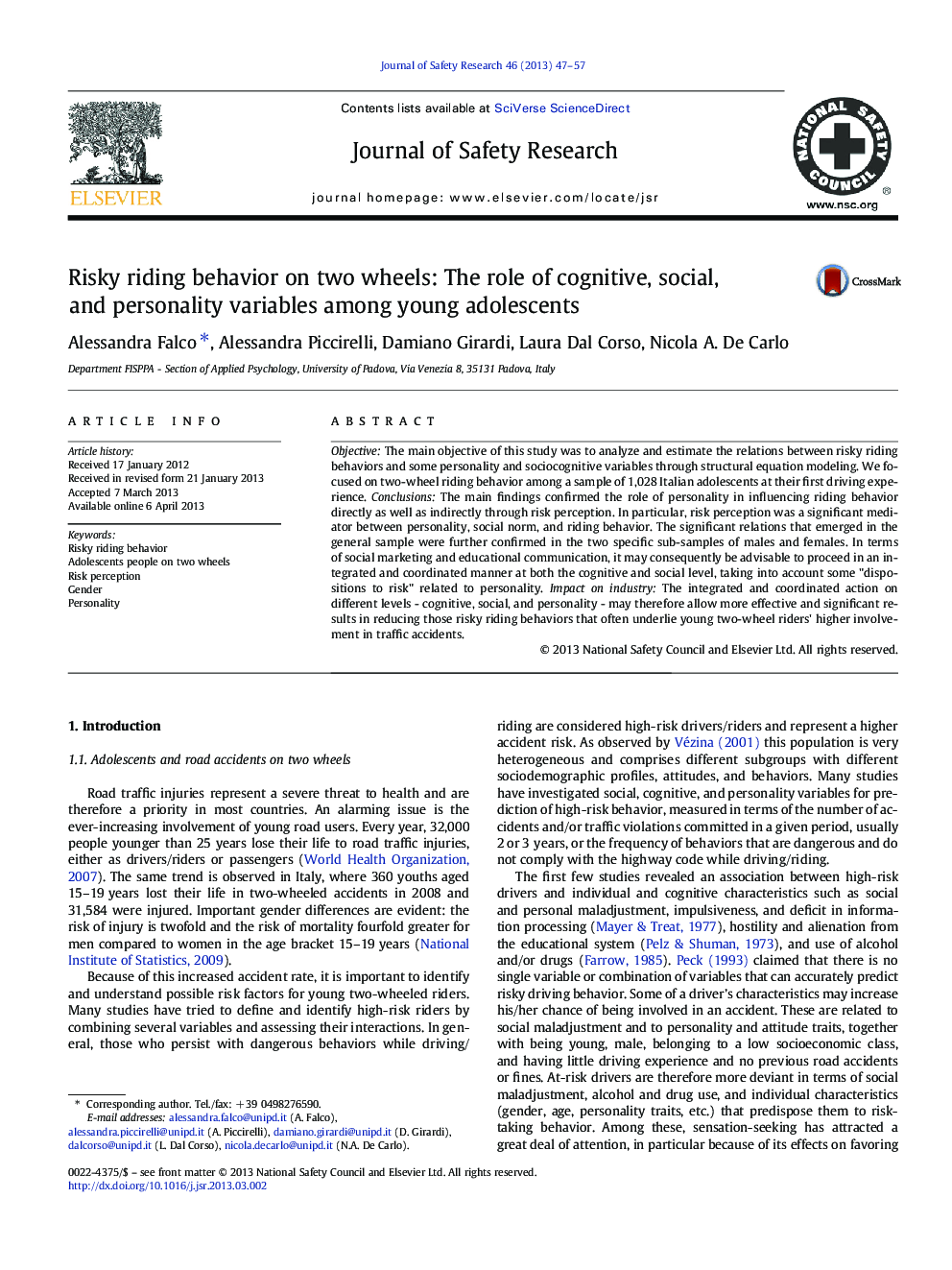| Article ID | Journal | Published Year | Pages | File Type |
|---|---|---|---|---|
| 587394 | Journal of Safety Research | 2013 | 11 Pages |
•Personality influences risky riding behavior both directly and indirectly.•Social norms influence risky riding behavior indirectly.•The mediating role of risk perception is confirmed.•Riding optimism does not influence risk perception or risky riding behavior.•Significant relations are confirmed in male and female subsamples.
ObjectiveThe main objective of this study was to analyze and estimate the relations between risky riding behaviors and some personality and sociocognitive variables through structural equation modeling. We focused on two-wheel riding behavior among a sample of 1,028 Italian adolescents at their first driving experience.ConclusionsThe main findings confirmed the role of personality in influencing riding behavior directly as well as indirectly through risk perception. In particular, risk perception was a significant mediator between personality, social norm, and riding behavior. The significant relations that emerged in the general sample were further confirmed in the two specific sub-samples of males and females. In terms of social marketing and educational communication, it may consequently be advisable to proceed in an integrated and coordinated manner at both the cognitive and social level, taking into account some "dispositions to risk" related to personality.Impact on industryThe integrated and coordinated action on different levels - cognitive, social, and personality - may therefore allow more effective and significant results in reducing those risky riding behaviors that often underlie young two-wheel riders' higher involvement in traffic accidents.
